Hadrian’s Wall was built to guard the wild northern frontier of the Roman Empire in AD122 but it was more than just a barricade. It was a multi-cultural occupied military zone of mile-castles, barracks, ramparts, forts and vibrant settlements stretching 73 miles from coast to coast.
What is Hadrian’s Wall?
In Hadrian’s Wall you take on the role of a Roman General who’s in charge of the construction of one such a milecastle and the bordering wall. Over six years you will have to defend yourself from the warring Picts while you construct your fort and wall, man the defences, and attracts civilians by building buildings and providing entertainment. The player who can collect the most renown, piety, valour and discipline and can avoid the most disdain, will prove to be the best Roman General and win the game.
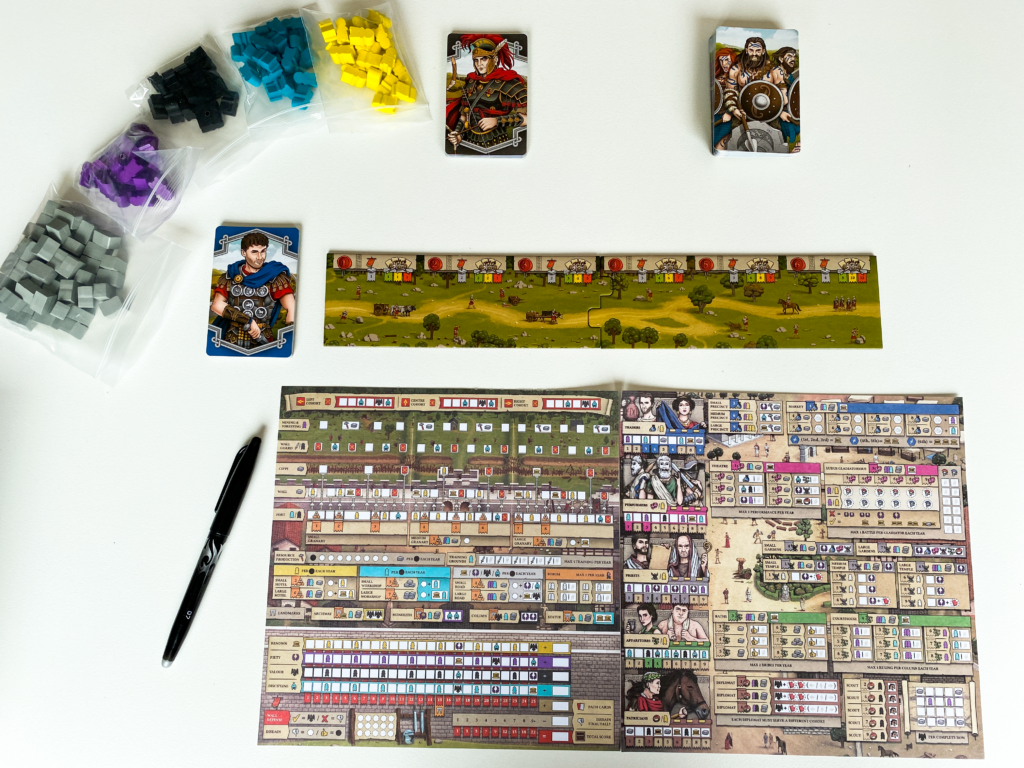
How to play
When the game starts the Fate Cards are shuffled into a central pile. All resources form the main supply for the game. Each player receives 12 player cards, a player board, one of each sheet and a pen. You place the player sheets in front of you with the player board above them and the deck of your cards to the left.
The game is played over six rounds. Each round will start by gaining workers and resources in various ways. Followed by the players taking actions on their sheets using these workers and resources and ending with a Pict attack.
The first thing that is done each round is revealing the top fate card. All players take the workers and resources pictures on the bottom half of this card onto their player board. Then each player draws the top 2 of their player cards. One of these you keep for the duration of the game as a goal (a path card) and the other you keep for the round (prospect card), gaining the resources pictured on it and possibly using the other parts of it when taking actions on your sheets. Lastly you gain items from specific filled-in areas on your sheets.
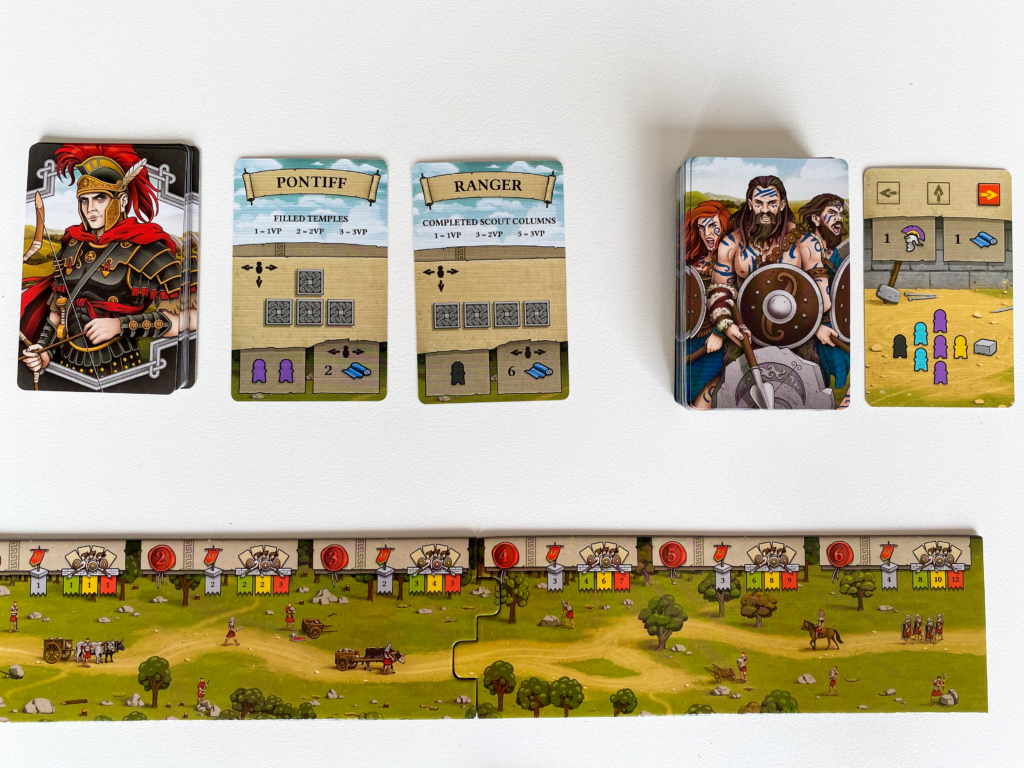
Taking actions is the most important part of the game in Hadrian’s Wall. Here you will pay a combination of workers or resources to be able to fill in one or more boxes on your sheets. When you fill in a box with an icon you gain the thing you just covered.
After all the players are done taking actions the year will end with a Pict attack. Before this happens all players must return all unused workers and resources to the main supply. Then a player will draw from the top of the fate card draw pile the number of cards indicated on the player boards for the round. These cards will reveal which cohorts will be attacked for how many times. Each player checks the cohorts on their sheet to see if they have enough defences to repel the attacks. Depending on the outcome they gain valour, disdain or a combination of both.
Final scoring takes place after the last attack on round six. Players use the scoring column on their sheet to count up their points and determine their final score.
How do you play Hadrian’s Wall solo?
Basically only one thing changes when playing solo; you will shuffle and set aside a neutral deck of player cards. Two of these cards will be revealed each year to provide additional trade goods and scouting patterns (which are provided by the other players in games of three people or more). Any time you use one of these cards for their goods or patterns, you place the resource or soldier you have to pay onto that card. When the Picts attack you reveal one extra fate card for each resource or soldier on these neutral cards.
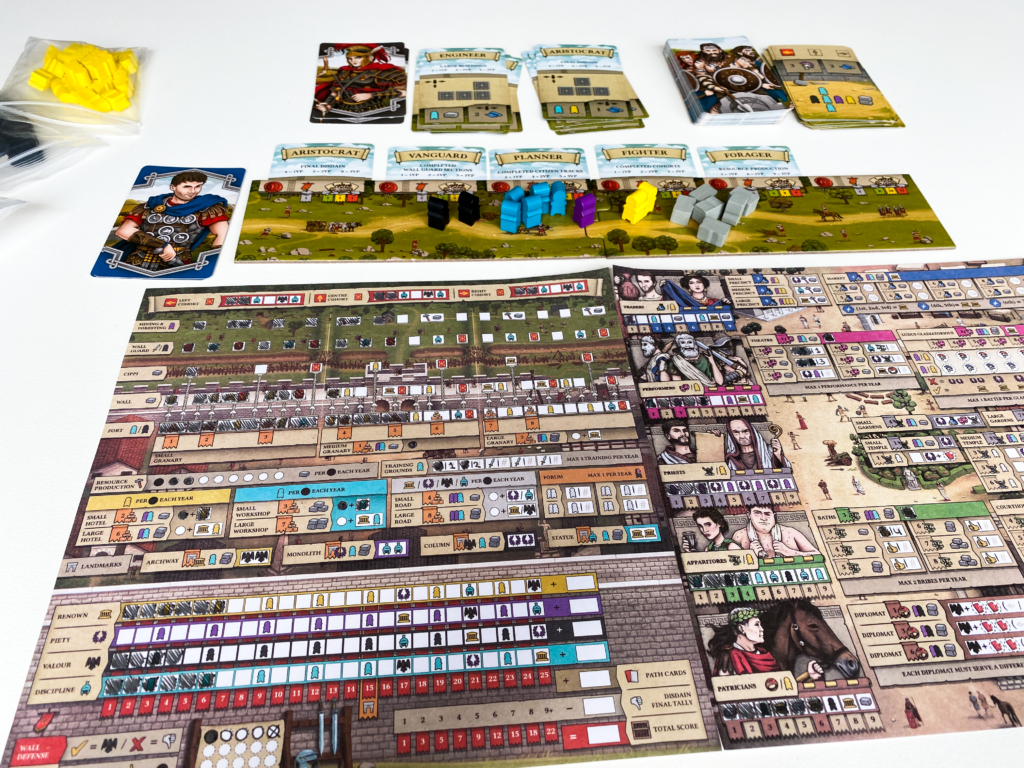
What does it feel like to play?
A solo game of Hadrian’s Wall can be played in about 45 minutes to an hour. Because there are always things to do and when you run out of options you immediately move onto the next round, the game feels really smooth. And it feels very satisfying to pay a yellow worker to advance the Apparitores citizen track, gain a blue meeple, use the blue to advance your fort, gain a new yellow worker and unlock the next wall and sipi options. Basically trading a yellow meeple for a bunch of progress and then gaining it back as well to take some more actions. All in all the game feels smooth and satisfying to play. Solo is barely any different from a multiplayer game, with basically no extra work or upkeep.
How much time does it take?
Setting up the game is very easy. You shuffle three decks of cards (fate cards, player cards and the neutral cards), grab your two player sheets and put all the resources and meeples somewhere within easy reach.
Playing a full game usually takes me about 45 minutes to an hour. Including set-up and tear down I would say a solo game of Hadrian’s Wall will run you between 60 and 85 minutes once you have played once or twice.
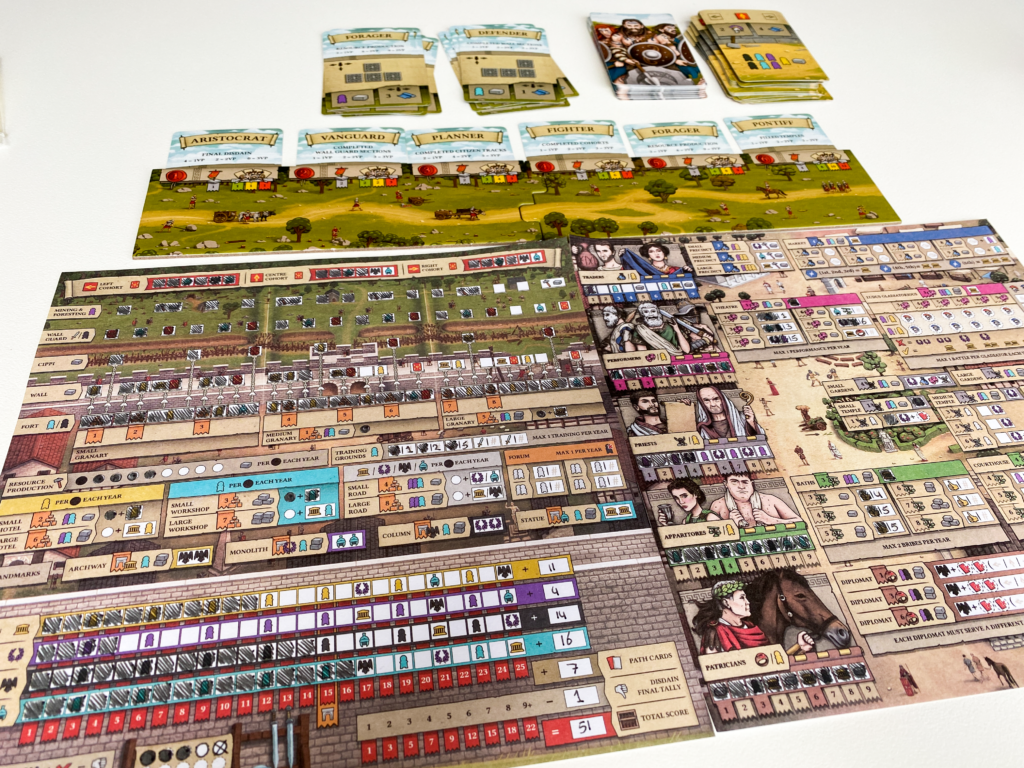
What I think of the game
Hadrian’s Wall is fast becoming one of my favourite nap time games. Part of this is due to the easy set-up and relatively short play time, but once you start playing this game yourself you will find that there is so much more to this flip-and-write. Defending yourself from the Picts is something you will want to do every game, thus spending meeples and resources on your wall and cohorts. All the other tracks and options, however, give a lot of variability from game to game. I find myself making different choices every game, depending on my starting resources and the goals I choose in the first rounds.
One game I will invest more into trading and goods, while another game I collected some disdain early on so I decided to invest in bathhouses and bribes more. Making these choices and sometimes changing direction during the game makes it feel fresh and challenging every time you play. It’s also just a lot of fun to see your castle and civilization grow and evolve with every turn, giving you more and more options and routes to take. All in all I can highly recommend this great game, especially if you like to play solo and/or want to have a great gaming experience in less than an hour.
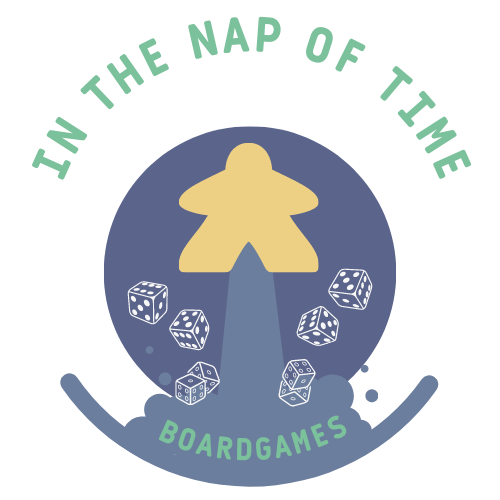

6 gedachten over “Hadrian’s Wall solo review – Defend the wall with your pen”